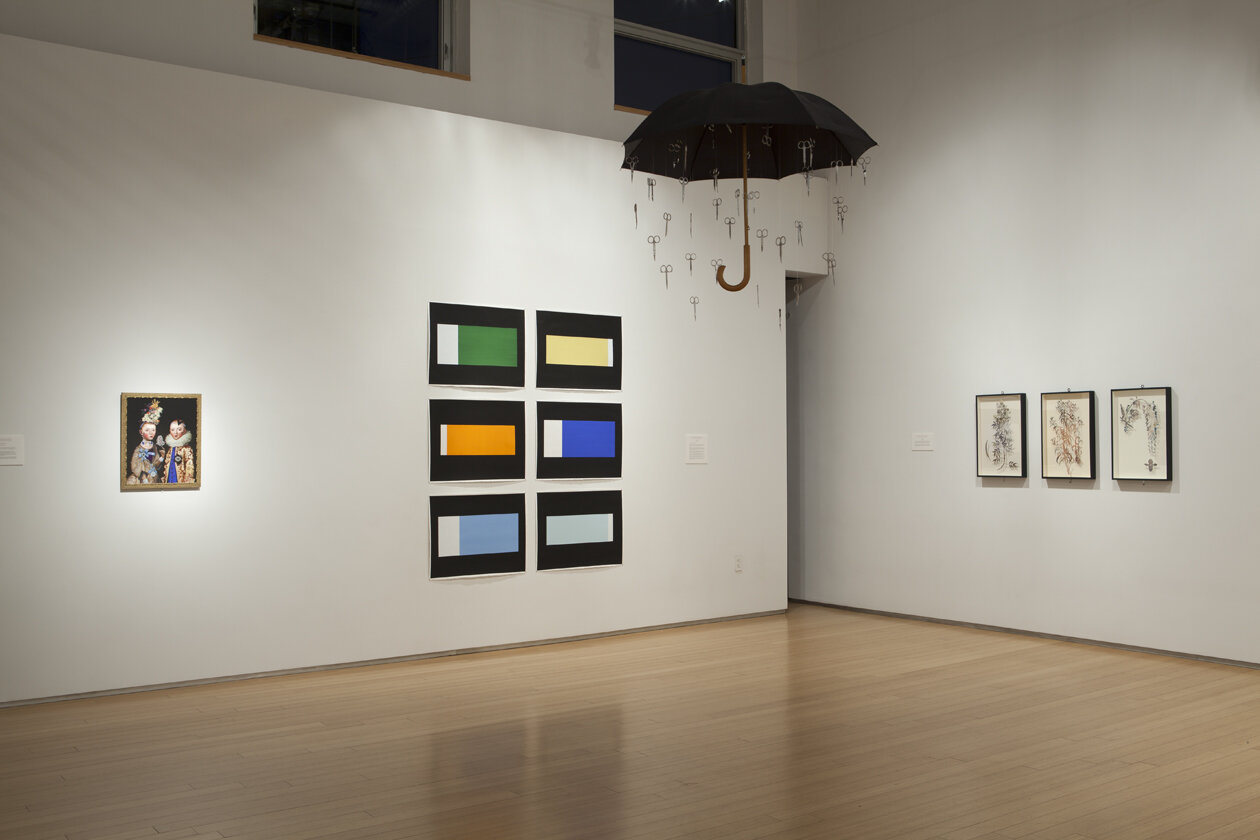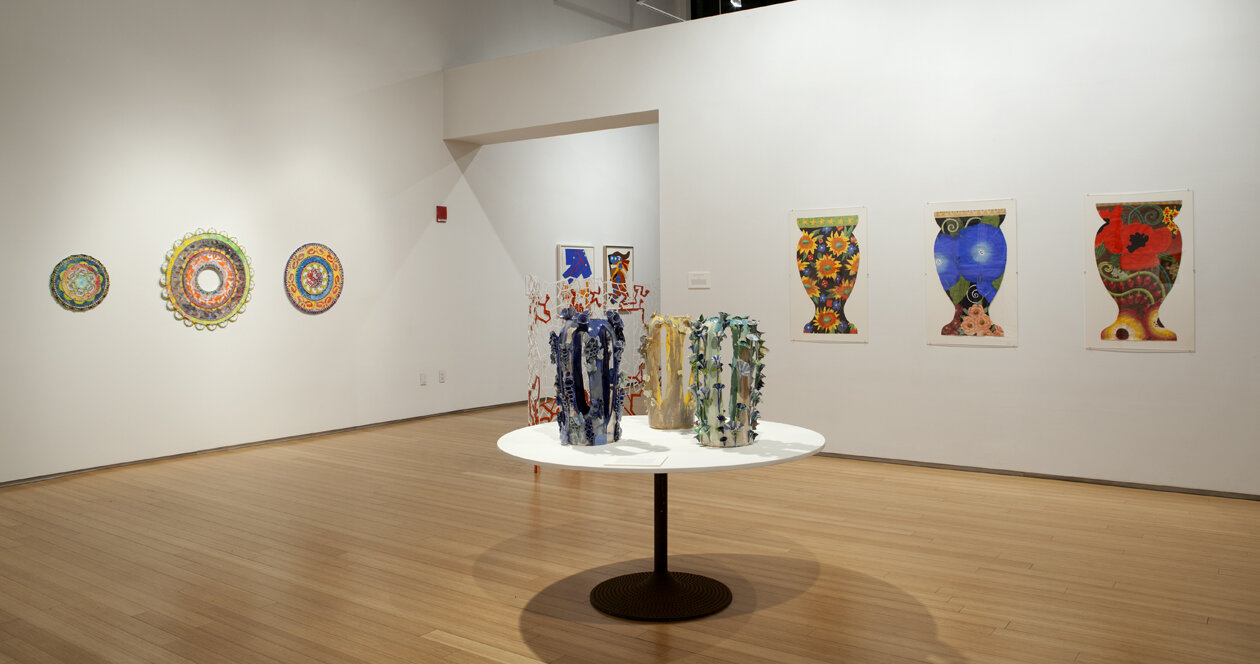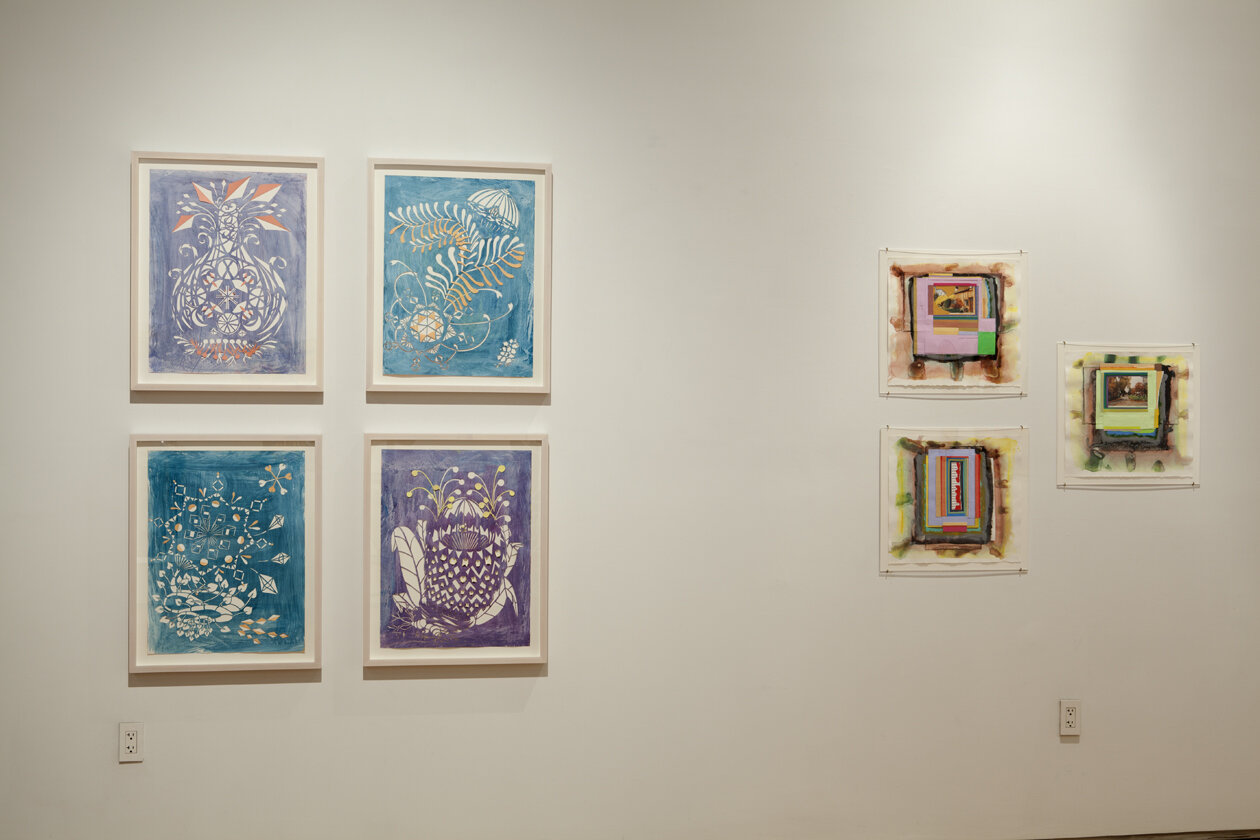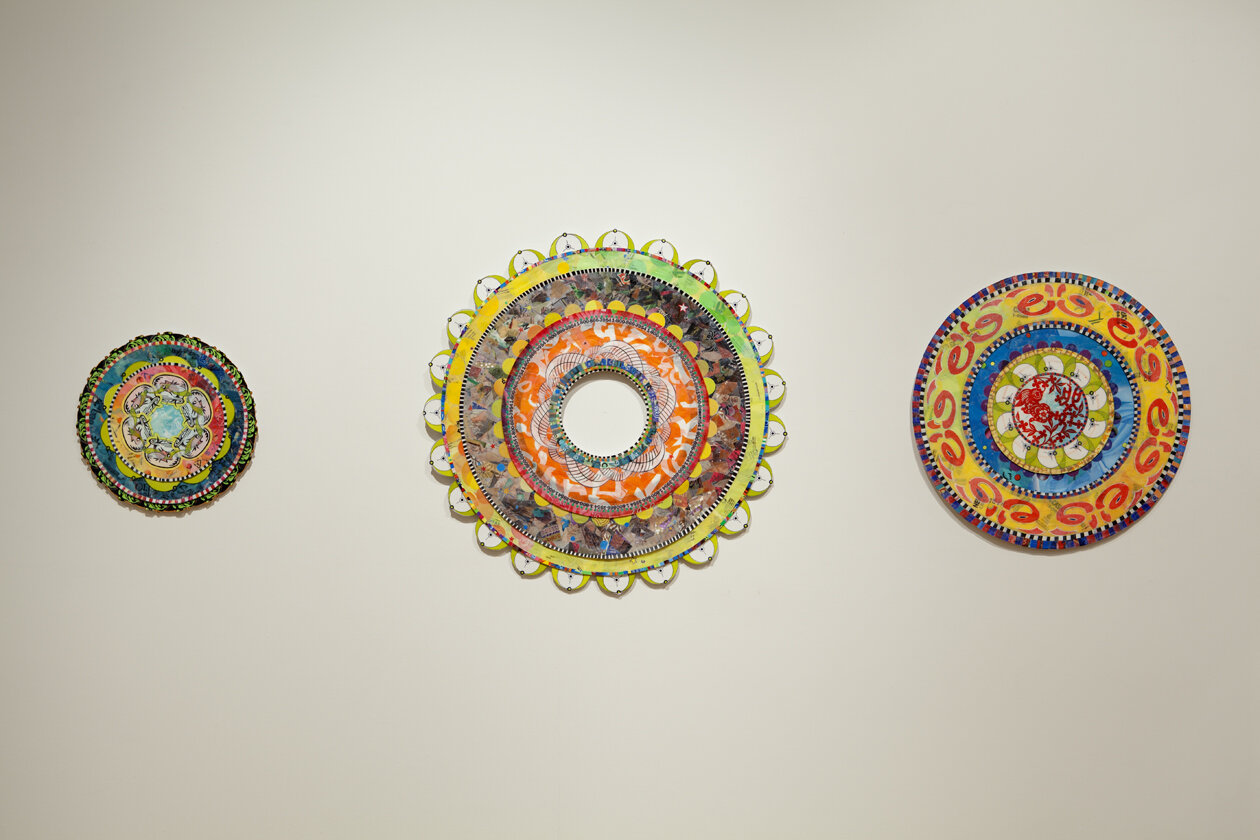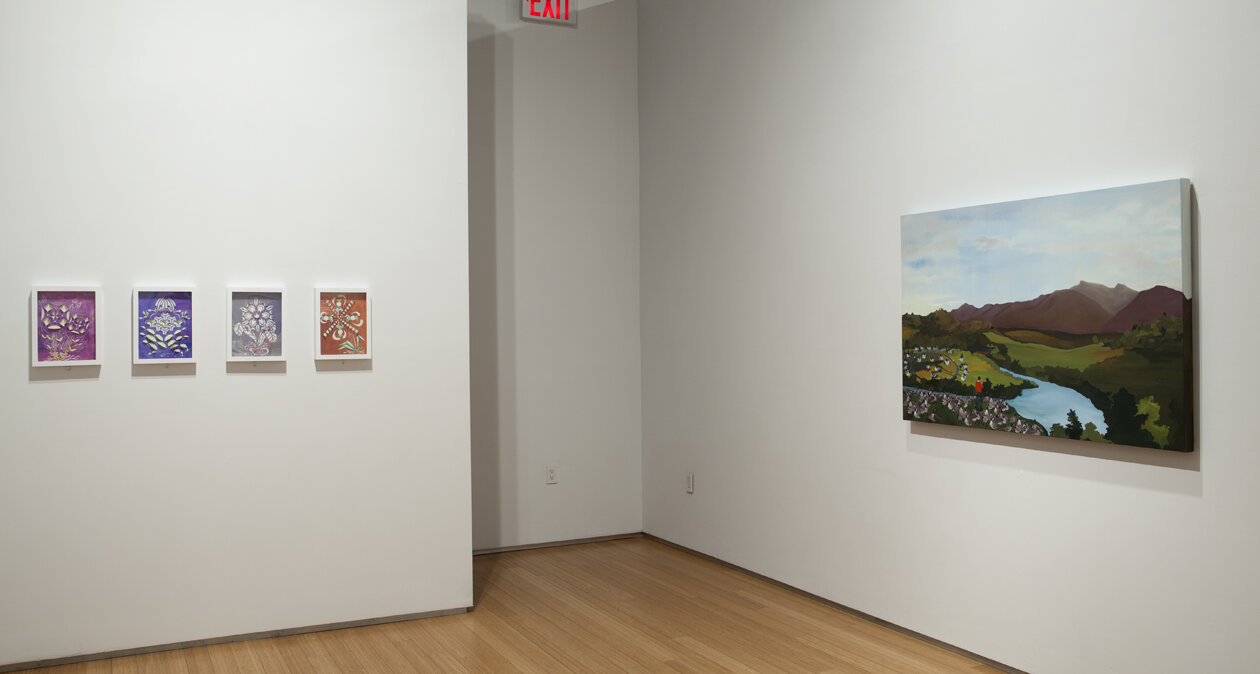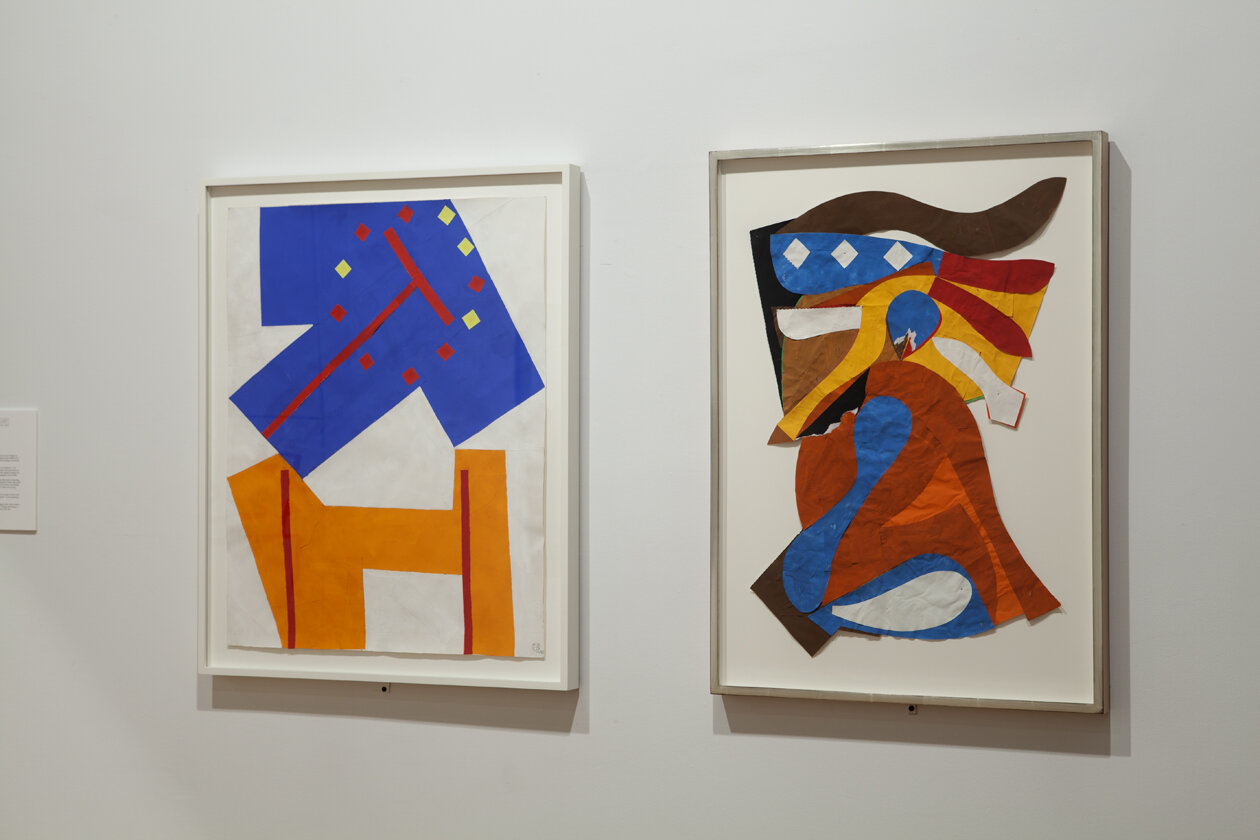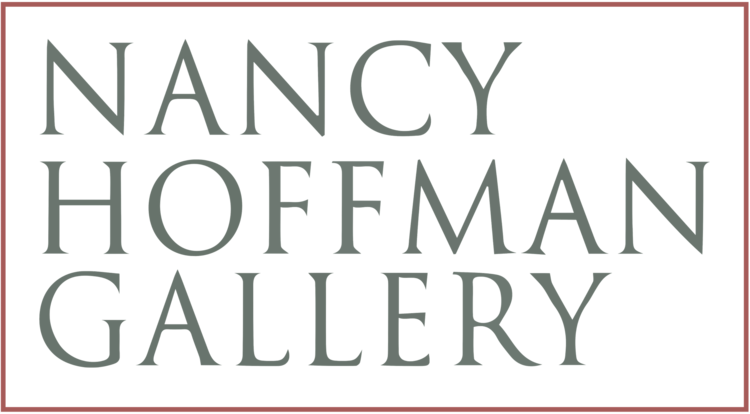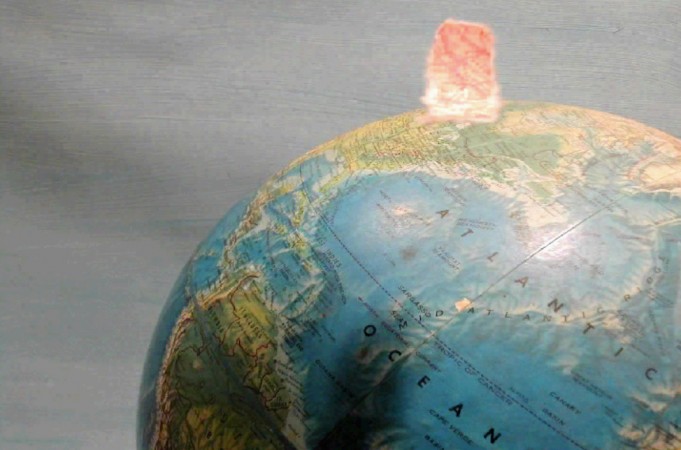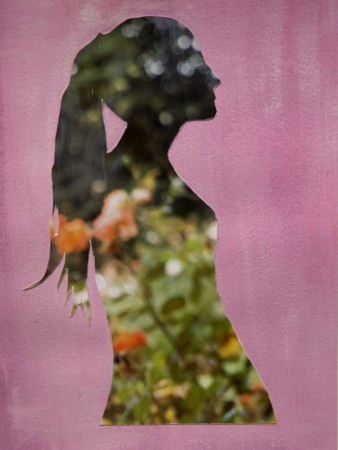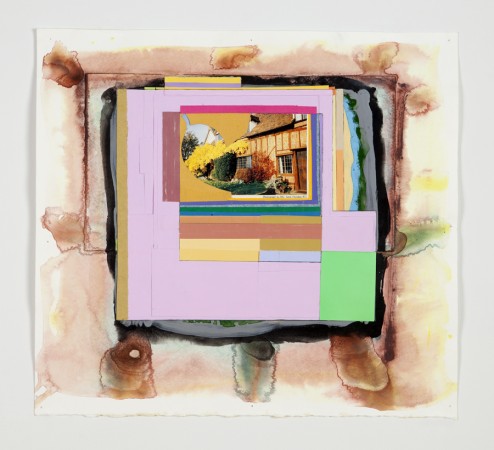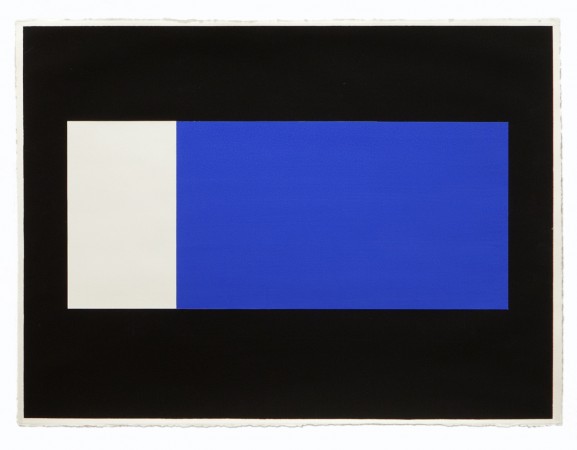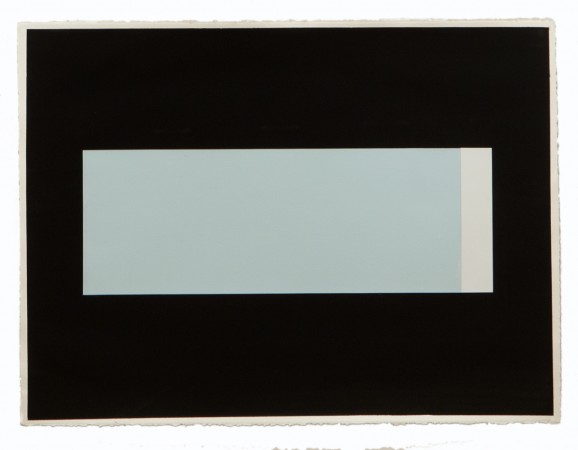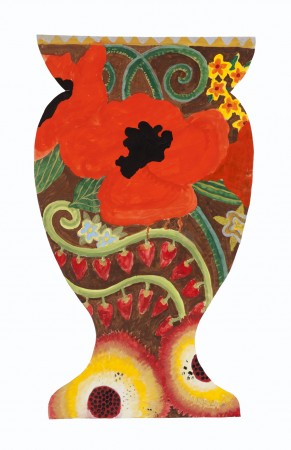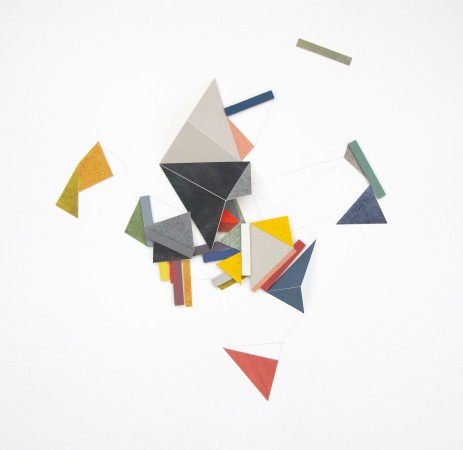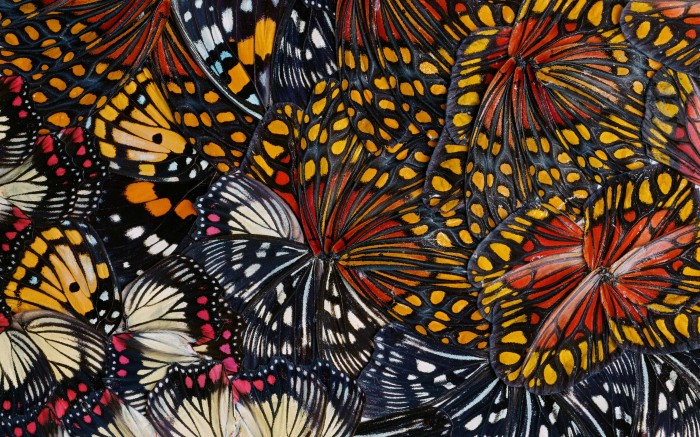Cutout/Decoupage
December 18, 2014 - January 24, 2015
On December 18th Nancy Hoffman Gallery opens "Cutout /Decoupage," a response and homage to the Matisse cutouts now on view at MoMA. The exhibition, which continues through January 24th, includes paper, plastic, steel and ceramic cutouts, as well as Asya Reznikov's video in which a cutout bird lifts from the surface of a globe and appears to flutter and fly around the world, over land and sea.
In an explanatory label at MoMA, a curator writes of Matisse's awareness that his cutouts were a step into the future. Matisse described his approach as "drawing with scissors" or "cutting into vibrant color." A MoMA curator writes: "With deft handling of his scissors, a sensitivity to the relationships between radiant colors, and an engagement with the lateral expansion of wall, Matisse realized the potential of the cutout as abstraction, representation, decoration, environment." Matisse invented a new way of working; from his bed or chair he would cut shapes from papers painted in his chosen colors of gouache, his life force and joy seemingly stronger than ever in these pieces. First the cutouts were for his own pleasure, pinned to the wall of his three homes in Paris, Vence and Nice. And then, they became more permanent parts of architectural environments and full room installations, with his crescendo cutout achievement being the Chapel of the Rosary in Vence, France.
For most artists in the exhibition, cutouts are an ongoing part of their studio practice. Katerina Lanfranco cuts imaginary species of plants out of paper she has painted in different colors front and back, folding cut out sections to reveal the color on the back of the paper. Her forms create a staccato bas-relief, a play of light and shadow, perhaps inspired by botanical classification and early botanical studies. She will also include two lyrical white pieces, variations on classical Japanese ikebana flower arrangements. Paolo Giardi found a trove of old "girlie" magazines, which became his palette for a large series entitled: "You can Learn a lot from the Flowers," using a scalpel to create his delicate imagined flowers. Virginia Fleck collects and stores plastic bags, and meticulously cuts shapes, logos, swirls and lines. She then composes her cutouts into circular mandala forms filled with color, and sometimes "pop" or iconic images of contemporary culture. Timothy Cummings’s regally dressed couple appears to be painted. Only the faces are painted, the costumes are cut out by the artist, a ruffle collar, a lace collar,
underneath brocade robes, every detail invented and fashioned with scissors. Jesse Small uses a laser cutter to perforate steel in his “Cell Screen,” which ambles across the floor like a choreographed dance movement. No front or back, this white and red screen exemplifies the show’s theme
"cutout/decoupage." There is nothing in this work that is not "cut out." These are a few pieces to be included in what promises to be an exciting, invigorating show, a contemporary response to Matisse and his abiding genius, and joy for life. In addition to the works themselves, each artist has written a statement about cutouts, why he or she chooses to explore the “cutout” as a primary mode of expression.
Jesse small writes of this concept in steel, “Cutting is like carving. What is really being created, the void space or the remaining object? The act of cutting out does not always mean the subject is the object, or that the goal is the object. At least three things are being created at once: The void space, the contiguous object, and the chips. Which has the most information is anyone's guess. In my work the act of cutting out has many meanings: the weight of the object is reduced, the opacity of the form is deleted, the shadows are not silhouettes but often carry more information than the object itself. I consider the act of cutting a kind of vandalism, which redefines the function of the object and imposes decoration. Holes in tires, plots, cups, roofs, clothes, are degradations, imperfections. When is a hole in something ever good? When it is intentional. So the act of making a bunch of holes can be seen as an act of destruction and creation at the same time, but it is never a neutral mark. A hole cannot be erased.”
Among artists in the exhibition are: Joan Bankemper, Sarah Bridgland, Fritz Bultman, Timothy Cummings, Rupert Deese, Purdy Eaton, Nathalia Edenmont, Virginia Fleck, Paolo Giardi, Katerina Lanfranco, Liséa Lyons, Lucy Mackenzie, Peter Plagens, Michele Pred, Asya Reznikov, Jesse Small, Robert Zakanitch and others.
For additional information and images, please call 212-966-6676 or message the gallery at info@nancyhoffmangallery.com
Happy holidays,
Nancy Hoffman
